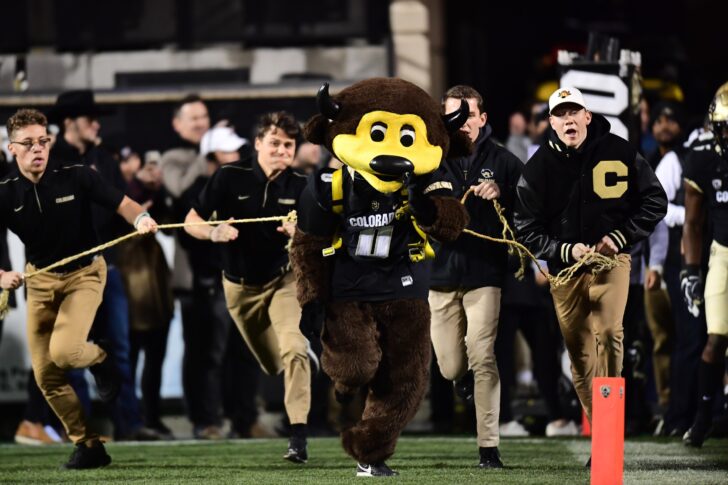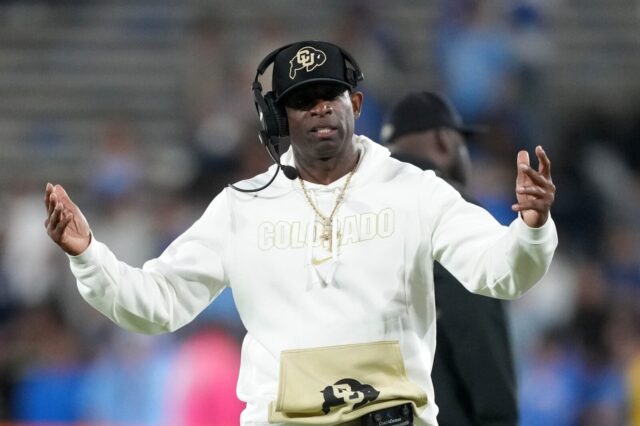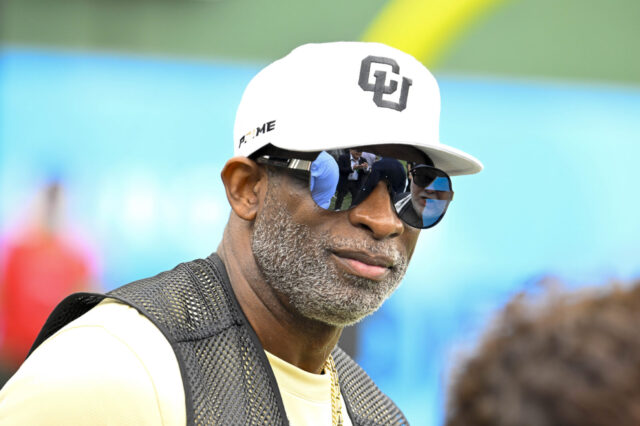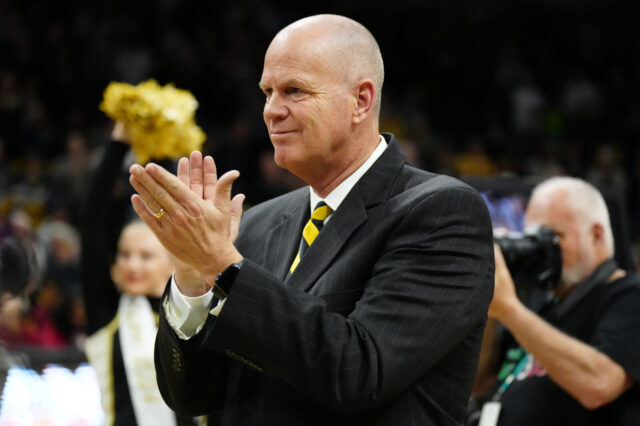If the “Players of the Pac-12” get their way, they’ll still be players.
They just won’t have a conference to play in.
That’s what will ultimately happen if the #WeAreUnited movement (?) goes down as the “Players” have demanded. That’s not my word, it’s theirs.
“#WeAreUnited in our commitment to secure fair treatment for college athletes. Due to COVID-19 and other serious concerns, we will opt-out of Pac-12 fall camp and game participation unless the following demands are guaranteed in writing by our conference to protect and benefit both scholarship athletes and walk-ons,” the Players wrote in a piece published yesterday by The Players Tribune.
If you haven’t read the piece – stop – click the link above and do so; I highly encourage anyone to read it simply to establish a basis for the remainder of this column.
We’re in a tricky time, and plenty of things are about to change – and college sports could be at the top of the list. You’ll get no argument from me that there’s a certain slime to college sports, that things aren’t always on the up-and-up, and most importantly, that college sports aren’t really all that fair, however you’d like to define “fair.”
Amateur athletes are assets in which the powers that be make money. That’s just a fact. There’s nothing amateur about the big business of college sports.
And the Players of the Pac-12 – by an organized, united opt-out of fall camp and games – believe they’re going to change that for good. They state: “To ensure future generations of college athletes will be treated fairly, #WeAreUnited.”
United they might be.
Right they might be.
Noble and idealistic they are.
Realistic they are not.
If every demand the Players have made is met, the Pac-12 is as good as dead. Sorry, players, that’s just the sad truth. If your conference meets your every desire, you’ll be dialing up the SEC, ACC or Big 10 if you’d like to continue your collegiate athletic career. There’s always room for change, always a place for negotiation, and hopefully that’s the true goal here – steps taken toward a better system – but if you “win” this contest too big, it’s game over for everyone.
Again, I’d encourage everyone to read their piece. But for the sake of this column, here are a few of the most reasonable and unreasonable demands (please note, the list below is incomplete):
Under “COVID-19 Protections”…
1.1 Allow option not to play during the pandemic without losing athletics eligibility or spot on our team’s roster.
Seems reasonable. In such uncertain times, the choice to play or not seems very personal. And since there’s anything but an “agreement” on all things COVID-19, there’s no such thing as right or wrong. It’s reasonable that a personal choice with regard to one’s own safety should not be punished.
Funny thing, once this declaration was made, Washington State said, “no problem,” and told its participating players to pack up their things and split. Of course, that did not go over very well with players and their parents. It’s not a good look for Washington State, but it’s a healthy reminder to those participating in #WeAreUnited that someone might call their bluff. Washington State will allegedly honor scholarships, but being told to take a hike wasn’t exactly what players were expecting.
- Prohibit/void COVID-19 agreements that waive liability.
One of America’s biggest problems is that anyone can sue everyone for anything. If that reality didn’t exist, then people and businesses would make decisions based on what they believed to be right or wrong, not what would or wouldn’t get them sued. If there were more personal accountability and less blame game (in general), the world would be a better place. And since nobody agrees on much with regard to COVID-19, if a student-athlete isn’t comfortable with the potential risk, then they shouldn’t play. It’s that simple, especially if demand 1.1 is met. But don’t sue the conference or the school if you get sick.
Under “Mandatory Safety Standards, Including COVID-19 Measures”…
- Player-approved health and safety standards enforced by a third party selected by players to address COVID-19, as well as serious injury, abuse and death.
Fairly reasonable, especially considering that many schools aren’t allowing on-campus learning. It seems counterintuitive that sports can resume and class can’t, but that’s an even bigger ball of wax. But, if sports are to resume, utilizing a third-party to enforce standards seems like the most responsible, and neutral, way to handle it. Getting everyone to agree, however, sounds like a major negotiation. Both sides should come as close as they can to agreeing, or agreeing on as many points as they can, and then roll out the balls. The reality, however, is that there will never be 100 percent “approval.” When it’s all said and done, if an individual still isn’t comfortable with inclusions or omissions, don’t play. Playing college athletics is a choice. In fact, it’s a choice that many high school athletes never get to make but would love to.
Under “Preserve All Existing Sports by Eliminating Excessive Expenditures”
2.1 Larry Scott, administrators, and coaches to voluntarily and drastically reduce excessive pay
This is where the Players are off the mark. Voluntarily? Drastically? Sorry kids, but this isn’t how the world works. Is Larry Scott worth what he makes (a cool $5.3 million)? Of course, that’s a matter of opinion. But opinions don’t matter much in a society that allows for capitalism. Anyone is worth exactly what someone is willing to pay them. Personally, I believe a really good high school English teacher is “worth” more than they make, and I don’t believe Larry Scott is “worth” anywhere near is salary. But, my opinion, or the Players griping about it for that matter, don’t count. Someone – someone with the money to pay him and an incentive make a return on their investment – is the only someone that matters. The Pac-12 member schools believed that Scott is worth what he makes. And that equation is pretty simple, too: If Scott creates more revenue than he’s paid, well, in theory, he’s “worth” it. Institutions of higher learning aren’t dumb enough to pay someone $5.3 million if he’s not generating that and then some in return. This is business, not fair or unfair, just business.
Now, on the flip side, Chris Murphy, a U.S. Senator from Connecticut, makes an interesting point. Murphy alleges that if Scott took a still very healthy salary of $450,000, the football players in the conference could split up what’s left of the original $5.3 million and pocket $5,000 each. Sounds great if you’re a football player. Not so great if you’re Scott. And somewhat headscratching if you’re any other kind of athlete in the conference (Hey Senator! What about us?). NCAA student-athletes getting paid is always a good idea until anyone tries to figure out how and how much. There’s a reason this mystery hasn’t been solved, and Murphy’s thought, while nice in theory, is far too simplistic. As much as everyone can agree that the system is broken, nobody has created a better one… yet. Perhaps Murphy, who makes $174,000, would take an even $100K. Maybe the UConn men’s and women’s basketball programs would enjoy divvying up the rest.
2.3 End lavish facility expenditures and use some endowment funds to preserve all sports.
Stop. Just stop. Is the arms race in college sports ridiculous? Absolutely. But, like all other expenditures, there’s a reason for it. Few folks smart enough to spend that kind of dough do so without having a plan to make it back. The reason schools spend money on “lavish” facilities is so that you, Players, will go there. And you do.
In the ‘80s and ‘90s, when Nebraska was a powerhouse, it was largely because it was known far and wide that the school’s facilities were a notch above (why else would someone want to go to Nebraska?). Oregon went from an also ran in the Pac-10 (at the time) to a juggernaut because Nike helped build some of the best facilities in the country. When Colorado struggled, guess what they spent money on? Nicer training facilities.
As ridiculous as it might be, building beautiful facilities works. The best athletes choose the nicest digs. Telling a school it can’t spend money to improve its facilities is akin to telling a business it shouldn’t buy a Super Bowl ad on TV just because you don’t think it’s worth it. Great facilities yield great coaches and great athletes which yield bowl games and TV contracts. None of the Players had a big issue with their respective school’s facility expenditures on National Signing Day. This isn’t rocket science and it’s certainly not personal or criminal. Our values might be completely skewed, but everyone – from athletes to administrators – shares the blame for that.
Oh, and endowments… generally speaking, those are most often set up by someone, or a group of people, with a specific plan in place. Most endowments have a clear-cut mission as to how and for what they’re used. In their Players’ Tribune piece, its’ suggested that Stanford should use it’s $27.7 million endowment to bring back the sports it has cut. That’s a nice sentiment, but just because Stanford has one, doesn’t mean you all get to say how it’s used.
Under “End Racial Injustice in College Sports and Society”…
- In partnership with the Pac-12, 2% of conference revenue would be directed by players to support financial aid for low-income Black students, community initiatives, and development programs for college athletes on each campus.
I’m not sure if 2 percent is the right or reasonable number – maybe that’s too high or not high enough. But in general, this seems like a great idea. This concept would take revenues from the big business of college sports and do good outside the lines. In principle, that sounds just fine.
…And then there’s the “meat” of the list of demands, where the Players begin dividing up the cash. And this is where it gets interesting (and, in some instances, irresponsible).
Under “Economic Freedom and Equity”…
4.1.1 Medical insurance selected by players for sports-related medical conditions, including COVID- 19 illness, to cover six years after college athletics eligibility ends.
This feels fair. Sort of. Injuries that occur while competing during the four years of college eligibility – for the good of one’s school – don’t magically heal once eligibility runs out or a diploma is awarded. It seems reasonable for schools or conferences to extend insurance beyond the time spent competing. “How long” – I would imagine – would be a major point of discrepancy. Six years? Or six years after? One feels fair, the other seems like it could break the bank. Imagine if a school or conference had to pay 10-11 years of medical insurance for every student-athlete that ever competed there. Because schools can’t just offer this to football players – soccer players, tennis players, track athletes all get hurt too. Perhaps there’s a fair way to manage this request, but blindly paying full coverage for everyone for six years after they’re gone isn’t realistic.
4.2.1 The freedom to secure representation, receive basic necessities from any third party, and earn money for use of our name, image, and likeness rights.
Again, this feels fair. If Donor Dan wants to have the O-line over for dinner, is that really a crime? If Car Dealer Joe believes he can sell more cars by hiring Johnny Quarterback, then so it shall be. This is the ultimate free market scenario. If a football player is worth something to someone because they’re exceptional and well known, then that player should benefit. If a swimmer is unknown and unlikely to provide return on one’s investment, then so be it. The only problem with this suggestion is that the NCAA would be forced to twittle its thumbs rather than investigating petty autograph scandals all day. Furthermore, if you think this doesn’t exist already, you’re kidding yourself. Making this type of bylaw “above the table” removes grey area and might actually level the playing field across schools and conferences – and it wouldn’t cost the school a dime.
4.3.1 Distribute 50% of each sport’s total conference revenue evenly among athletes in their respective sports.
Oops. This, Players, is where you lost me. To begin, 50 percent sounds like a completely arbitrary number, one given with no reason or rationale – certainly no consideration to what losing 50 percent of revenues could do to your school or conference. Most of the previous demands are already going to cost a lot of money, and now you want 50 percent of your sports’ revenues (ehem, the only sport that makes any “real” money for the entire conference) on top of that?
Ain’t happenin’.
Oh, and by the way, you just re-killed all those non-revenue-generating sports you want Stanford to bring back with its endowment.
For the past several years, the Pac-12’s success in football and basketball has dwindled. Gone are the days of USC winning national titles in football. UCLA and Arizona aren’t shining in March Madness like they used to. Not so coincidentally, the Pac-12 is simultaneously losing the revenue race amongst its fellow NCAA conferences.
In a recent article published by the Mercury News, the revenue gap between the Pac-12 and powerhouse conferences like the Big 10 and SEC is big and getting bigger. The article illustrates that in 2020, each Pac-12 school will take home $12 million less than each SEC school, and more than $20 million less than each university in the Big 10. A projection of the next five years suggests that each SEC and Big 10 school will receive at least $100 million more than each school in the Pac-12.
While holding your hand out for 50 percent of the Pac-12’s current revenues sure sounds like a swell idea today, all that will ultimately do is widen the gap – both on the bank ledger and on the scoreboard – between the Pac-12 and the other “big boys.” And when the conference isn’t competitive, ESPN won’t be putting its games on national TV, donors’ donations will dwindle and NFL GMs will discount the abilities of players who compete against lesser competition.
So, Players, remember why you went to the Pac-12 school of your choice in the first place. Yes, your God-given talents and hard work earned you the right to play for a top program, but why did you choose it? Facilities? Coaches? A long history of opportunity at the next level? Academics?
Like it or not, fair or unfair, a lot of that goes away without the almighty buck. Remember, there’s a reason – probably several – you chose not to compete in the Big Sky Conference. And if all of your demands are met, that’s where the Pac-12 is headed.
Remember this, too; on the eve of the new school year, millions of high school kids around the country are facing the harsh reality that they might not be allowed to play, for free, at all. And they’re upset about it. Why? Because its still sports. Sports are fun. Sports are a choice. Sports are a privilege, not a right. Some will play for the love of the game. Others will play for the exposure and opportunity to play at the next level – your level. Back when it was your turn to take the jump from high school to college, did any of this seem like such a raw deal? Nobody held a gun to your head, forcing you to “play” under the conditions you now dispise.
“United” can be a great thing. Positive change can happen because of “united.”
But the foundation for change must be sound, too. Change for the better doesn’t come when one fires from the hip without thought, conversation or understanding.
College sports can be a dirty business. Changes are needed; there’s no doubt. But if the demands made by the Players of the Pac-12 are met exactly, there will be no more Pac-12 to change.
And United you’ll fall.



